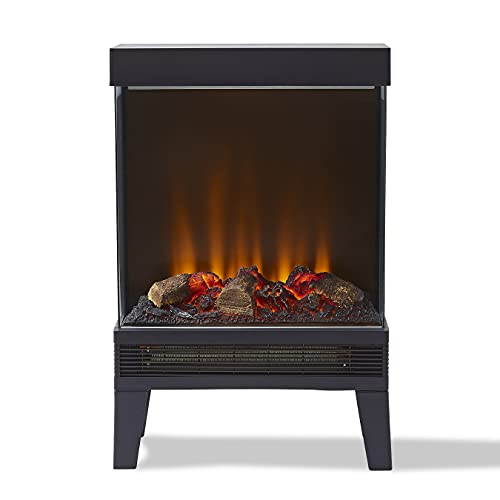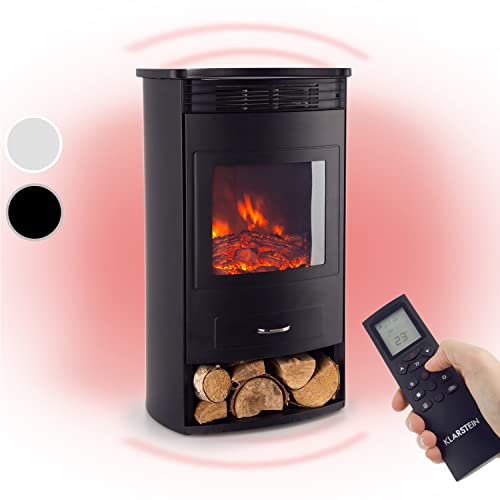Fireplace Explained In Fewer Than 140 Characters
작성자 정보
- Linda Mcdonough 작성
- 작성일
본문
 What Are Fireplace Accessories?
What Are Fireplace Accessories?Many homes have fireplaces shop that offer warmth and comfort all day and all night. They also add value and beauty to the interior of your home.
 If your fireplace requires to be repainted or just minor repairs, these tasks can often be completed by homeowners. However, certain tasks that require gas service should be left to skilled professionals.
If your fireplace requires to be repainted or just minor repairs, these tasks can often be completed by homeowners. However, certain tasks that require gas service should be left to skilled professionals.The Hearth
The hearth is a noncombustible surface that surrounds a fireplace or wood-burning stove. It could be a elevated area or simply the foundation where the fireplace is. The term "hearth" is commonly used to describe the whole area of the fireplace, which includes the firebox, the floor and mantel, as well as the chimney. It is crucial to remember that there are specific fire safety rules regarding the design of the fireplace and its accessories. Check with your local authority for further information.
They can be constructed from stone, bricks or cement. They are a fantastic focal point for any room. They are designed to create a barrier between the fire and the flooring and protect against accidental fires triggered by stray embers or logs. They also provide a space to store fireplace tools, wood and other supplies.
Archaeological research points to the importance of hearths as a key to early human existence. It is widely believed that they supplied light, food, protection and warmth.
A hearth could cause serious health problems if it is not maintained properly. Smoke inhalation can increase blood levels of nitrogen which blocks red blood cells (methemoglobinemia) from transporting oxygen into tissues. In high doses it can cause dizziness, nausea and loss of consciousness.
Hearths used to be made of rock however, they are now typically made of concrete or brick. They are available in a variety of shapes and sizes. Some cooking marble fireplaces come with hearths that are able to cover the entire wall while others are smaller and solely decorative elements that cover the opening of the fireplace. The material used to make the hearth can have a huge impact on its appearance and cost as well as resistance to heat.
The Surround
A fireplace surround (also known as a mantel) is the frame that sits above the hearth and adds to the ambience of a room. In addition to its aesthetic value it also serves as a useful element as it keeps combustible materials away from the hearth and disperses heat away from the room. It can also be used as a shelf to display household items like mirrors or paintings.
There are various options based on the type and size of the fireplace. Some are not combustible and others must meet national and local fire codes regarding clearance distances from fire-prone objects.
Some popular choices for fireplace; fireplaces67899.blog-ezine.com, the surround are stone, brick and concrete. Certain stone surrounds are carved with attractive features like bevels or bolection moulding. They can also feature plinths or cornices. These elements can give a house an elegant design that matches its style.
Another option is to use plaster. It is an amalgamation of sand cement and water. It can be shaped to match any style of architecture. A plaster surround, for white Fireplace instance, can complement the look of a Mission style house.
The final option for an interior fireplace surround is tile. It comes in a variety of colors and patterns. It can be used as an accent to the surround or spread across the entire wall to create an impressive focal point. It is a fantastic option for homes with contemporary styles.
The surround is the first thing that guests see when they enter a living room. It is essential to select a piece to set the tone for your home and to increase the value of your home.
The Firebox
The firebox is the space behind a fireplace's opening where the fire can be created and maintained. It's usually surrounded by a kind of chimney to allow the smoke to escape through. The majority of these traditional structures burn wood but some also burn gas such as propane or natural gas.
The firebox is where the fire is created and it must be maintained properly for safety and effectiveness. The hearth's grate as well as a fire poker and an air damper are the most important elements of the firebox that must be in place for proper operation.
In addition to keeping the firebox and Fireplaces Wooden its interior in good condition It is essential to clean your fireplace regularly. The interior of the fireplace will be matted by soot and dust because of its constant exposure to high temperatures. To accomplish this, employ wire brushes or a scraper to take off the caked-on ash and soot.
It's also a good idea to make use of steel slag or stainless steel to line the interior of the firebox to ensure durability and long-term use. These metals are resistant to corrosion and won't be rusty. They also offer an even heat distribution, which will last longer.
You can also enhance the visual appeal of your fireplace with decorative ethonal fire logs and lava stones. Some homeowners also opt to utilize modern glass with decorative designs as an alternative. Ensure that the fireplace you use is UL approved. This is not just the fireplace, but the accessories and decorations you're adding to it.
The Burner
Burners are a great method to add warmth and beauty to a space. These fireplace accessories are available in many different shapes and sizes, so it's easy to find one that is suitable for your home. Some even come with remotes, which means you can control the flame from any place in the room. Fire burners can be used indoors as well as outdoors, as they are safe.
There are many types of burners. Each has its own pros and cons. Some are more expensive than others, however they all provide a variety benefits for your home. Some are safer than other ones, and some operate with chimneys or without. No matter what kind of burner you pick be sure to follow the instructions in the user's manual. This will ensure the burner is installed correctly and in compliance with all local and state laws.
Burning wood is a traditional method of enjoying your fireplace, however it's not always the most efficient. Apart from the fact that it's a messy, inconvenient process it also produces smoke and soot that it releases can be harmful to you and your family. Ethanol fires are on the other hand produce water vapor and minimal CO2 - which is much more eco-friendly.
A fireplace can also be helpful in the occasion of an outage. In winter, trees can be weighed down by the weight of snow and ice, which causes them to fall, and power lines to fall below. You can use your fireplace to cook and keep warm if the power is out in your home. This is a major plus for homeowners who want to be prepared for the unexpected.
The Flu
The flue is a passageway inside a chimney which carries gases and smoke out of the house. It's also an essential component of a secure and efficient fire. A flue creates an updraft that pulls air through the fire, allowing the fuel to burn fully and reduce smoke.
The flue's draft keeps the hot gases emitted from the fire from escaping into your home. Instead they are pushed outside to cool. This controlled venting stops carbon monoxide from escaping.
Regularly inspect your chimney for any leaks or blockages. The flue pipe (a steel tube or duct that runs through the middle of the chimney) must be cleaned with special cleaning chemicals and equipment. The metal brush, a drill with a brick bit and masking tape are all required to get rid of any tarnish or soot that has accumulated on the walls of the chimney flue pipe.
Close the flue when not using your fireplace to prevent conditioned air from escaping. This can also stop rain or wind gusts entering the fireplace and damaging your wood stove or gas furnace.
The damper, which is located at the bottom of the flue pipe or flue tiles and at the top of the fireplace can be opened or closed with a latch or handle. The damper is designed to keep the fireplace's flue clear when the fire is burning. However it should be closed when the fireplace is not in use. This will save you energy costs.
관련자료
-
이전
-
다음
댓글 0
등록된 댓글이 없습니다.
